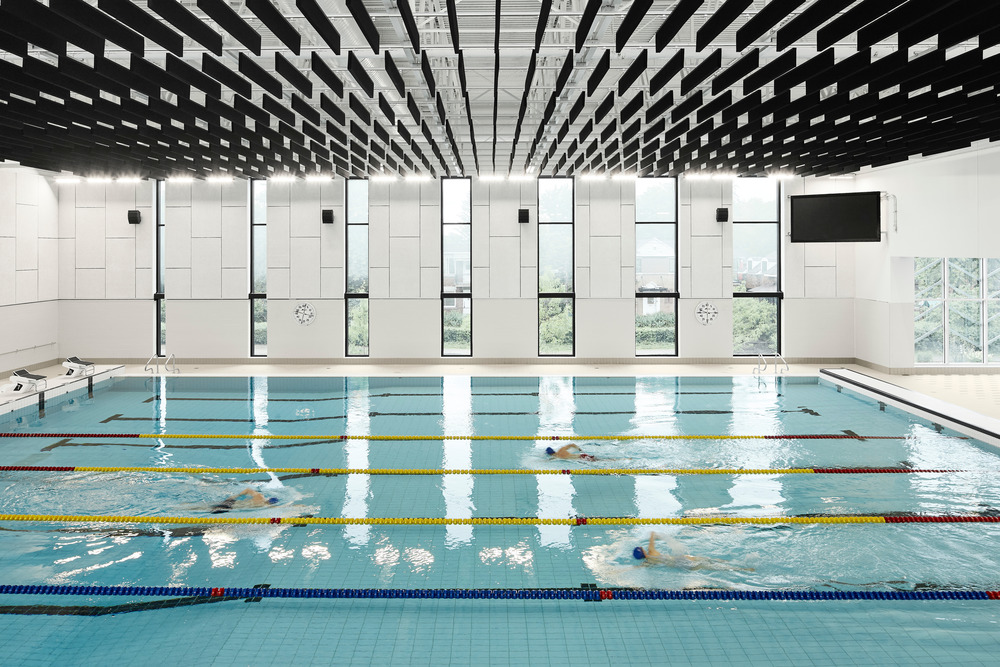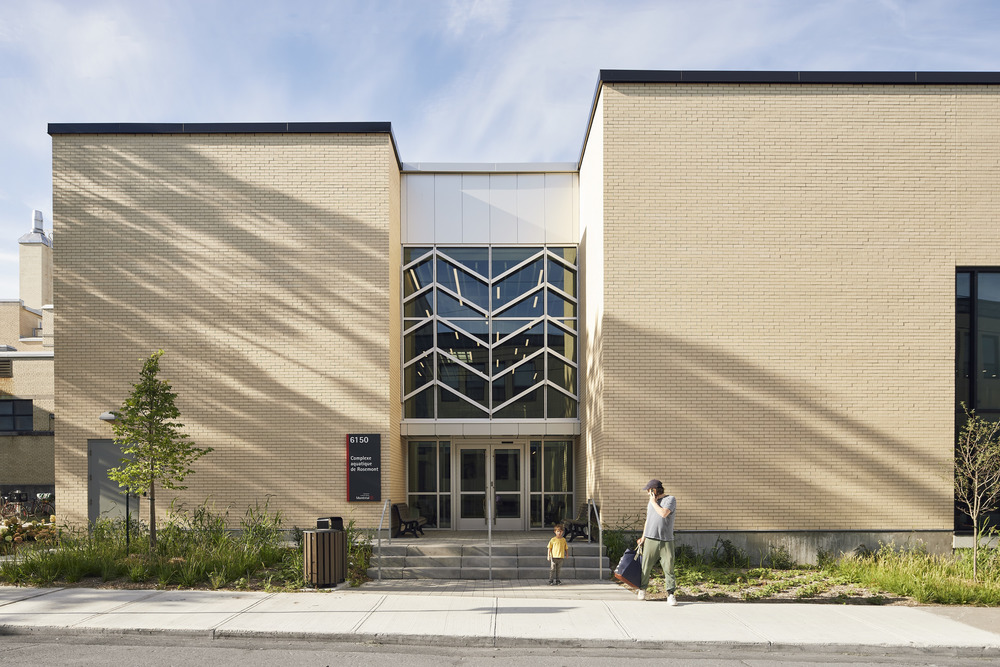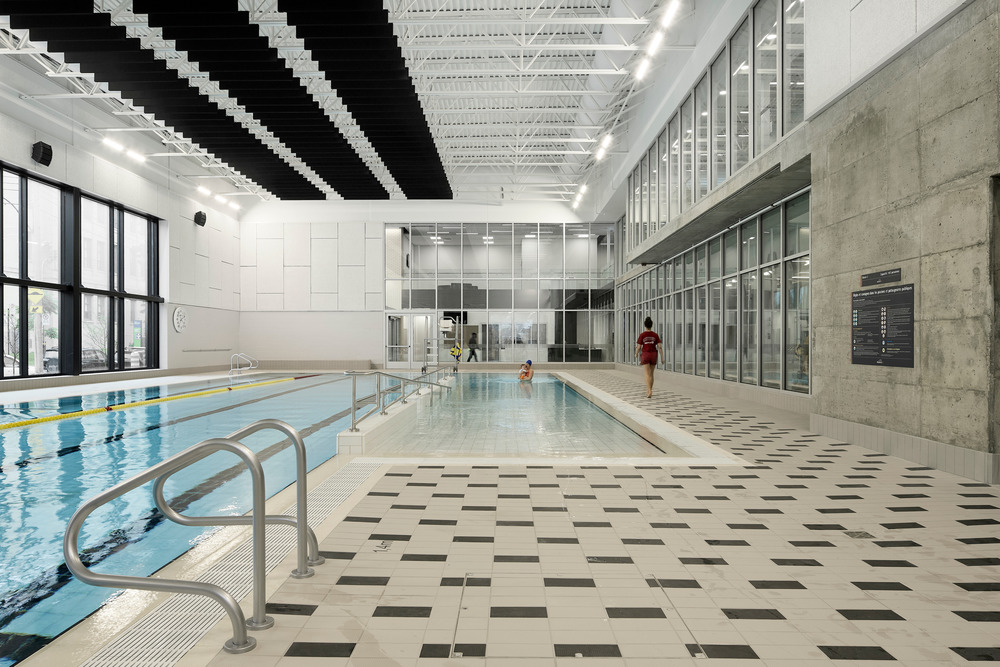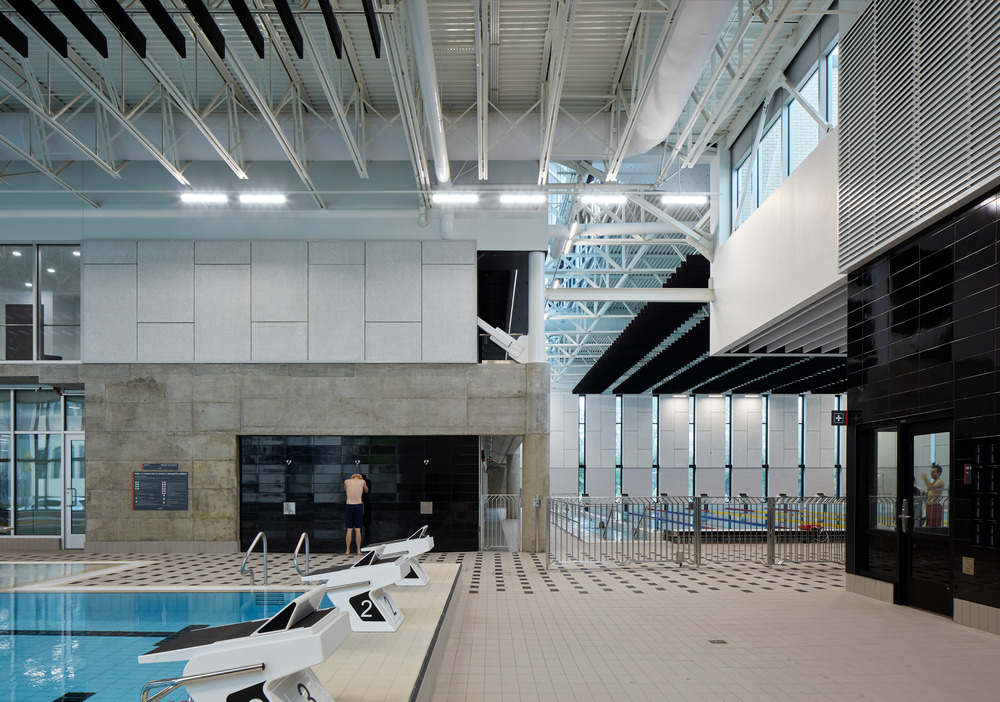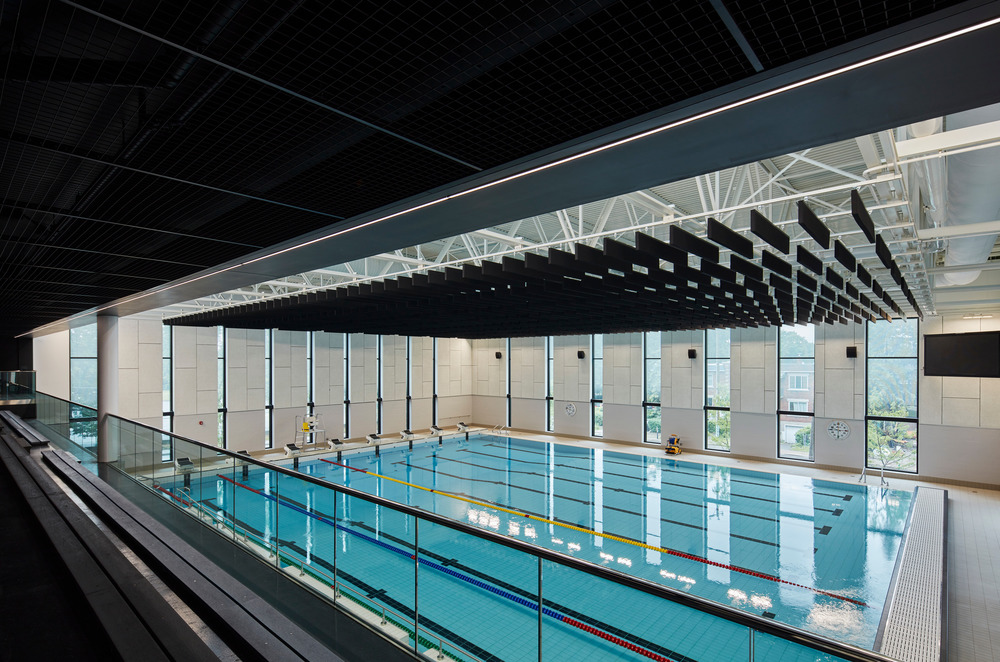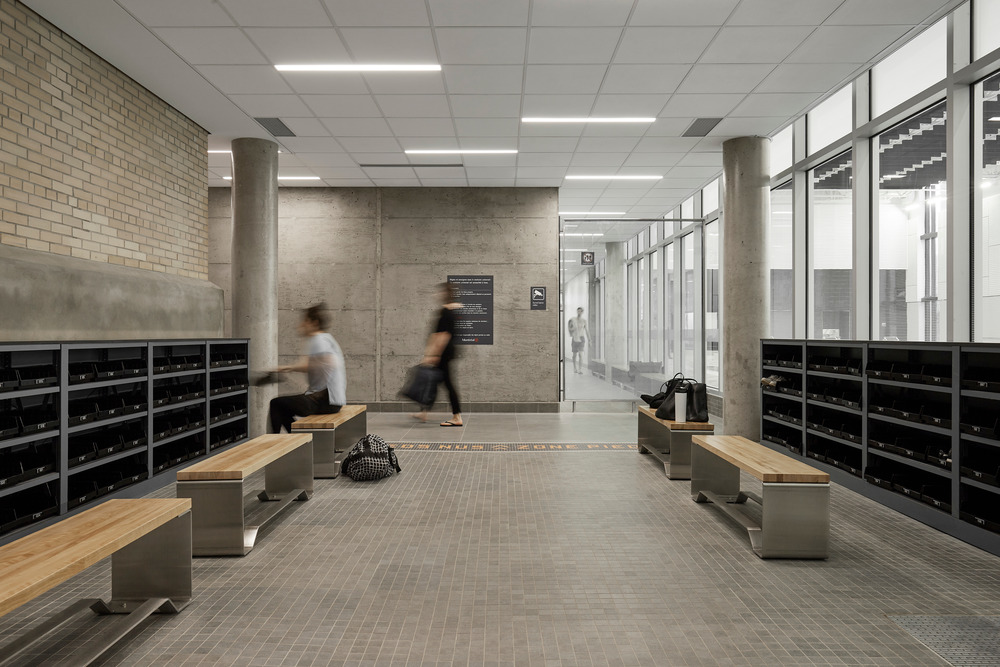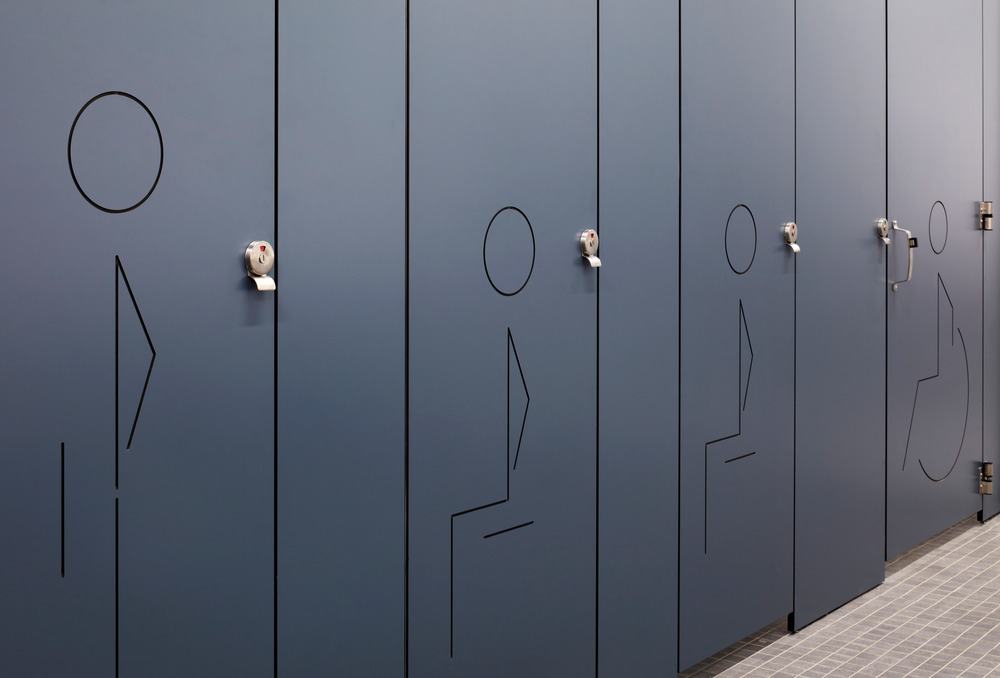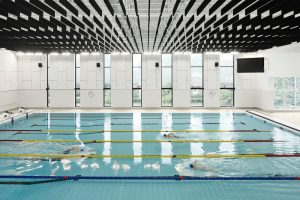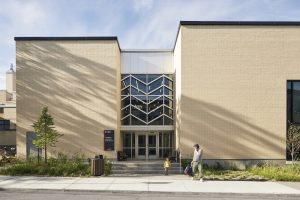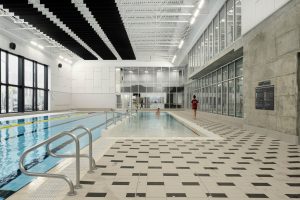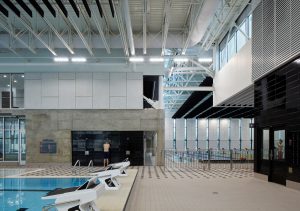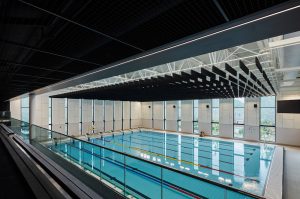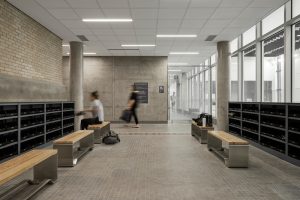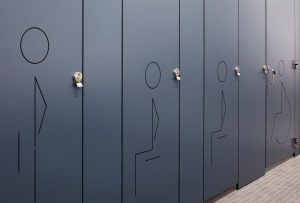Montreal’s Rosemont Centre recently added an aquatic side to the facility, which has a semi-Olympic pool, an acclimatization pool, and multifunctional rooms.
Inaugurated in 1951, and designed by architect Jean-Julien Perreault, the Rosemont Centre is in the heart of a dynamic and diversified neighbourhood. It houses a library, a community centre, and a swimming pool.
The new facility was designed by Poirier Fontaine Architectes Inc., in collaboration with Riopel + associés architectes and KANVA. GBI served as the structure, civil, and electromechanical consultant; Groupe BC2 was the landscape architect; SYNAIRGIS was the Leadership in Energy and Environmental Design (LEED) consultant; and MAGIL Construction provided their services as general contractor.
Sports, cultural, and community activities are distributed throughout the site to promote interconnection between its components. By working side by side, the different programs create new interface spaces. Placed at the junctions of the different programs, the intervals facilitate a direct and positive dialogue between the components of the site. The circulation creates fluid and intuitive movement of visitors, so they can access the different activity areas and the spaces acting as interfaces between them.
Apart from the interconnectedness and democratization of activity areas to all visitors, the facility also prioritizes accessibility. The universal locker rooms are tailored for people with disabilities, with adapted lockers, a wheel cleaning hose at the entrance of the locker room, and an elevator. Visually connected to the pools and the outdoors, they promote inclusion, safety, and openness within the community. The pools also have ramps to allow people with limited mobility to fully enjoy the facilities.
The architecture underlines the will to create a distinctive and unified cultural and sports pole, calling on users to take advantage of this civic axis and to develop lifestyle habits that combine sports and art.
The centre targeted LEED Gold certification using environmentally friendly strategies, including the use of natural light, energy saving water, renewable geothermal energy, and ventilation that eliminates chlorine particles in the air.


